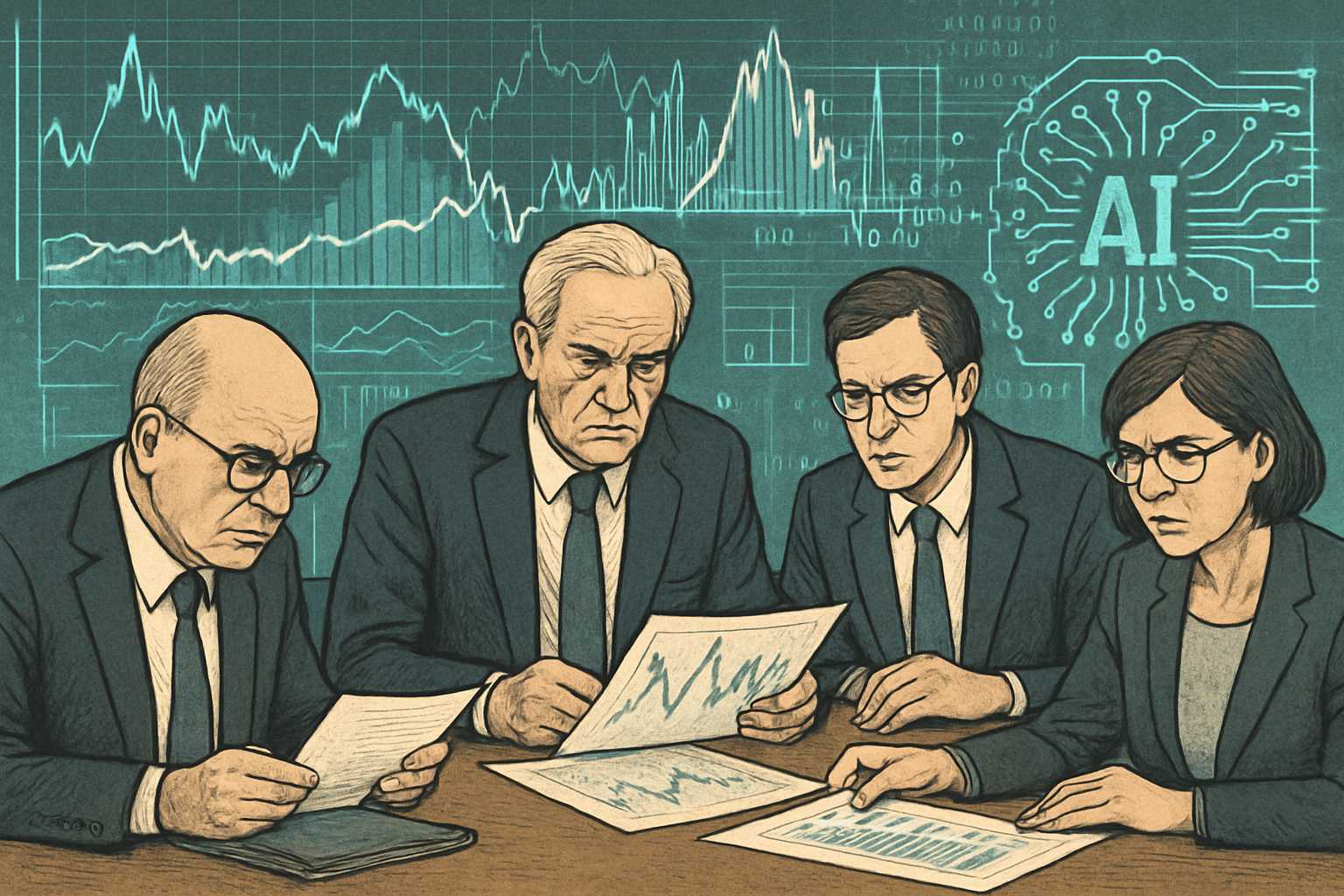
AI CERTS
1 day ago
AI economic impact clouds official growth signals
Finally, it outlines steps leaders can take, including pursuing the AI+ Data Robotics™ certification to sharpen analytical skills.
Data Signals Turn Hazy
Headline numbers look impressive. AI economic impact dominated first-half U.S. GDP, contributing two-thirds of measured growth. Moreover, capex in information processing equipment and software surged 26 percent, the fastest clip in decades. Nevertheless, payroll reports remain soft, while consumer sentiment sags. In contrast, asset prices soar alongside tech earnings, underscoring a bifurcated landscape. Observers worry about macro risk because diverging indicators challenge traditional models. Furthermore, elevated cloud compute cost pressures margins outside Big Tech, widening performance gaps. These contradictions complicate rate-setting deliberations at the Federal Reserve.

These mixed signals emphasise measurement blind spots. However, persistent volatility also reflects genuine structural change. Consequently, analysts must rethink indicator hierarchies before drawing policy conclusions.
Hardware Spending Skews GDP
Servers, accelerators, and networking gear ship by the pallet. Consequently, customs forms show imports of chips and racks jumping. Morgan Stanley notes that removing those imports trims first-half growth by 1.3 percentage points. Therefore, the apparent AI economic impact shrinks markedly once intermediate goods are excluded. Additionally, high cloud compute cost encourages firms to lease capacity rather than buy assets outright, muddying capital formation data.
Meanwhile, trade flows distort regional balances. Rising deliveries from Taiwan and South Korea inflate the deficit, triggering fresh macro risk debates in Congress. Nevertheless, suppliers welcome the boom.
Imports Distort Growth Readings
IIF researchers estimate that hardware accounts for most recorded investment. However, software and data preparation, which drive long-run productivity, remain partly invisible. Consequently, national budgets built on optimistic tax projections may disappoint once the import effect normalises. Furthermore, governments that subsidise data centres face opportunity costs as health and education outlays compete for cash.
Skewed readings mask real momentum. Therefore, enterprises should monitor unit economics beyond top-line activity.
Intangibles Escape Official Lenses
Software code, training datasets, and refined models rarely appear on balance sheets. Consequently, measured capital understates true capacity. Academic work on AI economic impact suggests misclassification can hide substantial gains. Moreover, under-capitalised intangibles depress productivity estimates, encouraging overly tight monetary stances. In contrast, inflated hardware tallies create false comfort about growth breadth.
Additionally, cloud compute cost turns many outlays into operating expenses, bypassing investment surveys. Nevertheless, intangible accumulation continues behind corporate firewalls. These accounting quirks elevate macro risk because they blur the denominator in debt-to-GDP ratios.
Effective reform of statistical methods is slow. However, firms can future-proof staff skills via the AI+ Data Robotics™ credential, which teaches advanced valuation techniques.
Such initiatives narrow knowledge gaps. Consequently, private actors can act while bureaus deliberate.
Policy Makers Face Uncertainty
Cleveland Fed President Beth Hammack captures the dilemma: “When you see this bifurcation, it’s really difficult for monetary policy.” Furthermore, inflation remains sticky although wage growth cools. Consequently, central bankers weigh conflicting narratives about AI economic impact. Meanwhile, legislators fear ballooning national budgets if growth fizzles unexpectedly. Additionally, they worry about cloud compute cost draining foreign exchange reserves in smaller economies.
Policy errors could amplify macro risk. Therefore, multilateral cooperation on data standards is urgent. Moreover, transparency from hyperscalers about investment composition would aid forecasters.
These governance challenges persist. However, credible communication can stabilise expectations during revision cycles.
Argentina Forecasts Swing Often
Buenos Aires offers a cautionary tale. Reuters polls show Argentina’s 2025 growth estimates ranging between four and six percent. However, each new INDEC release prompts immediate revisions. High equipment imports for AI initiatives widen trade swings, complicating fiscal planning. Consequently, national budgets require frequent amendments. Meanwhile, peso depreciation elevates cloud compute cost, squeezing smaller exporters.
Additionally, stubborn inflation keeps macro risk premium high. Nevertheless, rising agricultural exports provide offsets. Policy makers therefore juggle subsidies, tariffs, and capital controls in real time. Furthermore, private banks adjust lending spreads weekly as data shifts.
These gyrations illustrate the global challenge. Consequently, analysts tracking AI economic impact must incorporate stochastic trade shocks into models.
Strategic Steps For Leaders
Executives cannot wait for perfect data. Consequently, they should build resilience through diversified supply chains and scenario planning. Key actions include:
- Benchmark cloud compute cost quarterly across vendors.
- Cap capital expenditure at risk-adjusted hurdle rates.
- Model cash flows under multiple national budgets assumptions.
- Pursue advanced training such as the AI+ Data Robotics™ certification.
Furthermore, boards should link incentive pay to tangible and intangible return metrics. Additionally, finance teams must monitor macro risk indicators like credit spreads and currency swaps. Consequently, firms can pivot quickly when statistics are revised.
These strategies position organisations for durable advantage. However, disciplined execution remains essential as volatility persists.
The evidence shows measurement gaps, distorted trade flows, and shifting forecasts. Moreover, AI economic impact complicates every dashboard from Washington to Buenos Aires. Nevertheless, leaders can thrive by understanding data quirks, hedging macro risk, and investing in human capital. Therefore, explore certifications and continuous learning to navigate the next economic cycle with confidence.



